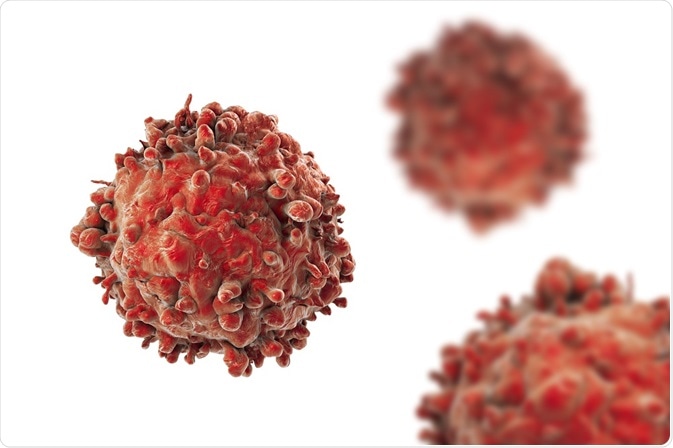The growth and maturation of blood vessels is a highly controlled multistep process called angiogenesis. This process is involved in both natural development of tissues and advancement of diseases such as cancer.
 Credit: Kateryna Kon/Shutterstock.com
Credit: Kateryna Kon/Shutterstock.com
Only a few adult tissues usually require angiogenesis, including the female reproductive organs. However, other tissues also utilize this process for repairing blood vessels following an injury.
Stages of angiogenesis
The angiogenetic process is controlled by a balance of various growth factors and inhibitors. The first stage is stimulation via the production of basic Fibroblast Growth Factor (bFGF), Granulocyte Colony-Stimulating Factor (G-CSF) and Interleukin-8 (IL-8). These genes are up-regulated due to various physiological stimuli, including hypoxia due to growth, blocked arteries or injuries.
These growth factors bind to their receptors on the surface of endothelial cells, which are located on the surface of blood vessels, and result in a signalling cascade. This cascade acts to stimulate these endothelial cells, beginning the process of cell migration and proliferation.
Matrix metalloproteinases, including MMP1 and MMP2, then begin to degrade the capillary wall by dissolving the basement membrane. Once degraded, a new branch point is formed within the wall of the existing vessel.
A type of adhesion molecule called Integrins are then used to guide the proliferating endothelial cells to the branch point. Once they have migrated, they are then arranged into the structure of tubules before they are connected with the existing blood network. These new vessels are then matured and stabilized, resulting in a new branch of tubule.
In addition to activating growth factors, there are also inhibitors which function to control angiogenesis. These include thrombospondin-1/2, interferons, angiostatin, endostatin and collagen IV fragments. Angiogenesis is controlled by the balance of both the activators and inhibitors.
Angiogenesis and cancer
The growth and survival of tumours is reliant on angiogenesis, as they require the removal of waste products and the supply of both oxygen and nutrients. As tumours grow, the cells become hypoxic and therefore angiogenesis is stimulated dramatically. This results in loss of control and a poor structure with chaotic organisation of tubules and leaky blood vessels.
Metastasis is defined as the process by which a cancer spreads from a primary tumour site to a distinct secondary site. Tumours are often not fatal as long as they remain in their primary site, with metastasis responsible for over 90% of cancer mortality.
Tumours spread via the blood supply, being carried to other areas of the body to develop secondary tumours. Therefore, one possible method for treating cancer is by blocking angiogenesis, and hence blocking cancer from spreading via the blood system.
Summary
Angiogenesis is a highly ordered process. Initially endothelial cells are stimulated to proliferate by growth factors, before the vessel wall is broken down and new vessels are formed at a branch point.
This process is very important in the growth and repair of tissues and in the development of cancer. Blocking this process has also been suggested as a possible treatment option for cancer, as this could prevent the metastasis process and the growth of tumours.
Further Reading